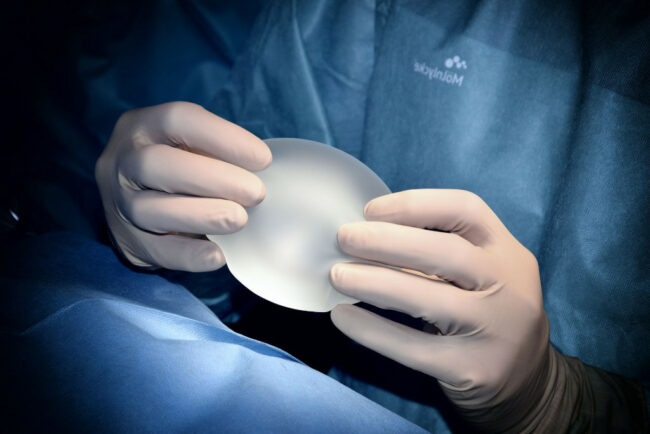Facts about breast lift surgery
- Age, childbirth and breastfeeding cause the skin around the breast to lose its elasticity. In addition, greater weight loss can also lead to a loss of volume in the breasts, which the contraction of the skin cannot subsequently compensate for. The breasts can therefore hang
- A breast lift is a cosmetic operation in which excess skin is removed, the tissue is lifted onto the chest wall and as much tissue is preserved as possible
- The breasts are lifted up to a more original position. This makes the breasts appear rejuvenated and fuller
- A breast lift causes permanent scars, which may be red and swollen at first. In most people, however, the scars gradually become less visible over time
Breast lifts are mainly carried out privately. The intervention is only carried out under public auspices in connection with:
- Adaptation of one breast to a contralateral breast which has been reconstructed after disease
- If there is a significant difference between the two breasts
- Some women are offered the procedure after previous bariatric surgery (MWL surgery) when a significant weight loss with the resulting excess skin has been achieved and a number of other criteria are met.
What is the purpose?
The purpose of a breast lift is to tighten the skin and lift the breasts. Although the surgery does not increase the size of the breast, the breasts may appear larger after the surgery due to the higher location.
How does the operation take place?
A breast lift can resemble a breast reduction , but with a breast lift, no or only limited mammary gland and fat tissue is removed. It is thus mainly excess skin that is removed.
There are different techniques for breast lift. Most involve the plastic surgeon removing excess skin under and/or around the nipple. The nipple with its associated nerves and blood supply is then moved up to its new/original position on the chest wall.
Breast lift is most often performed under general anesthesia and usually takes a few hours. It is possible to combine a breast lift with breast enlargement surgery, either by inserting an implant or by moving excess fat from other places on the body to the breasts.
If you are over 35-40 and are going to have cosmetic breast surgery, it is generally recommended that you have a mammogram done before the surgery. This is done to exclude that there are diseases in the breasts that require treatment. A mammogram is an X-ray examination of the breasts.
Results
The breasts are lifted closer to their original position. This makes them appear rejuvenated and fuller. The effect of the procedure is permanent, but the breasts will eventually sink/sag again when you get older, after renewed pregnancy and breastfeeding, or with major changes in body weight.
You should expect to take 1-2 weeks off work and avoid physical activity for 4-6 weeks after a breast lift. To achieve the best possible result, it is important to use a supportive bra or similar for at least 3 months after the operation.
The scars should not be exposed to the sun for a year due to the risk of pigment changes. It can take up to a year before the scars are mature and soft and the final result is achieved. The scars are covered for the first 3 months with skin-friendly tape.
Side effects
A breast lift results in permanent scars, which may be red and swollen at first, but gradually become less visible over time. All breast surgeries leave scars to a greater or lesser extent.
The location of the scars depends on the chosen surgical method. Methods that are used for more extensive breast lifting often cause, in addition to scars around the nipple and from the nipple down to the furrow under the breast, also a scar in the furrow under the breast.
If you smoke, the scars may become more obvious. The risk of complications such as tissue death and problems with wound healing also increases.
Possible complications
All surgery carries some risk of complications. As with any other surgery, there is a risk of post-bleeding, which may require surgery and lead to an increased risk of infection.
Another rare complication of a breast lift is losing the ability to breastfeed due to damage to the milk ducts around the nipple. You may also risk the size of the breasts becoming uneven or the nipples becoming asymmetrical. In some cases, this can be corrected by a new operation.
You can also lose the sense of touch in the nipples, although rarely completely.


